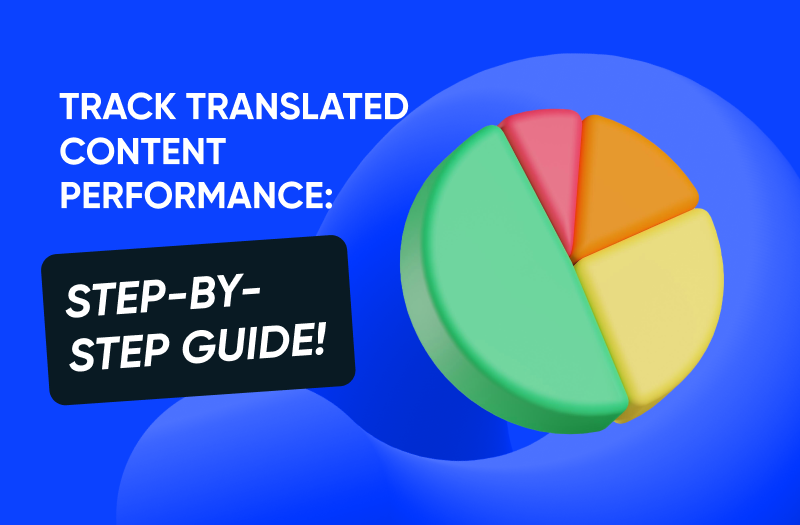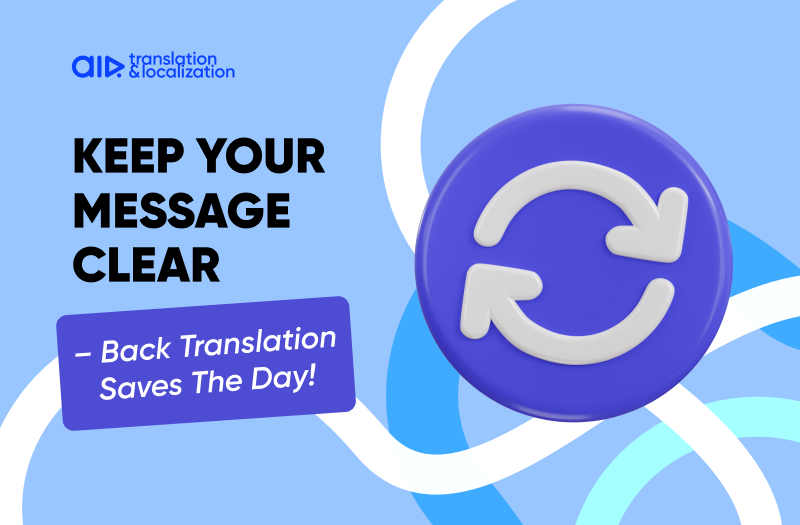Table of contents
Sure, you've put time and money into translations and dubbing, but how can you be sure your content connects with audiences in different languages?
Tracking the performance of translated content isn’t as simple as “views up, views down.” There’s a whole world of YouTube analytics at your fingertips to help you get the full picture, ensuring your videos resonate with diverse audiences and result in maximum revenue.
Let’s explore how to analyze your translated content effectively with this step-by-step guide. We'll break down the most crucial YouTube metrics and show how AIR Translate can simplify the localization and tracking process.
Step 1. Analytics Tool In YouTube Studio
Old but gold—YouTube Studio—is your first step on the way to a comprehensive performance analysis of the translated content. You may think you already know all about it and we are not keeping you posted, but YouTube Analytics is an unmatched starting point. It offers insights into:
- Audience Retention by Language: Monitor audience retention for regions where the translated language is spoken. Look for any dips or spikes during certain sections to see if particular phrases, cultural references, or video pacing might need adjustment for that audience.
- Content Velocity in Regional Markets: Content velocity (how fast your translated video gains views right after being posted) in specific regions can reveal how well your content performs initially with local audiences. Quick spikes that taper suggest initial interest, while steady growth points to lasting appeal.
Step 2. Multilingual SEO
Localization isn’t just for your viewers; it’s essential for search engines, too. Optimizing your content for regional keywords and metadata is crucial for enhancing visibility in target markets. Track organic search traffic, keyword rankings, and backlinks using SEO tools. Effective international optimization strategies will help your content reach broader audiences. Here are the SEO tools you can use to improve YouTube video performance:
- VidiQ: Helps track performance by providing detailed insights on keyword ranking and audience engagement, showing how translated content compares across regions and languages.
- TubeBuddy: Offers A/B testing for titles and tags, helping you fine-tune translations for the best audience reach.
- Ahrefs: Analyzes search volume and competitor data for translated keywords to reveal high-demand regions and refine localization.
- TubeRanker: Tracks keyword success by language, highlighting growth opportunities and performance gaps across regions.

Resource: Statista
Hundreds of creators have optimized their translated content with AIR Media-Tech, connecting with global audiences and enhancing performance in every language. As a YouTube-recommended vendor for translation and localization, AIR ensures top-quality service tailored to your growth. Contact us to learn more!
Step 3. Monitor Audience Feedback
Engagement is king, no matter the language. Track how well your content is performing in different languages and document feedback for future translations. Use this information to create a style guide or checklist specific to each region. Here’s what to look for:
- Comments: Pay attention to the comments section on your videos or social media posts. What are viewers saying about the content? Are they finding it relatable and engaging? High interaction suggests your content resonates culturally.
- Likes and Dislikes: Do folks like your videos? How many dislikes? These are quick and easy translation metrics.
- Conversion Rates: If you have specific goals (like getting viewers to sign up for a newsletter or clicking a link), measure how well your translated content is driving those actions.
- Ask Your Audience Directly: Ask for feedback in the comments section, through the community tab, or even directly in your videos. Encourage them to share what they like or what could be improved.
Step 4. Time to Market and Cost Efficiency
Speed and cost are often significant concerns when expanding internationally. Streamlining your localization workflow can minimize time-to-market while ensuring high-quality outputs at competitive prices. Track ad revenue by region to see where localization is most profitable. Monitor the localization timeline for each stage with:
- Cost-Efficiency Analysis: Localization cost efficiency is calculated by comparing the total costs (including translation, editing, and deployment expenses) against the revenue generated from each region. By dividing the income by the localization costs, you can determine each region's return on investment (ROI). Give your content a reasonable time to perform, ask experts to evaluate it, and then check whether the financial results are what you expected them to be.
- Benchmarking: By comparing your costs and processes with industry standards, you can see if you're spending wisely. This process shows if you're overpaying or missing out on cost-saving opportunities. It helps you find ways to improve and be more competitive, learning from the best in the industry.
YouTube Recommends AIR Translate
Choose a vendor trusted by YouTube and thousands of creators!
Step 5. Conduct Longitudinal Studies
Consider using longitudinal studies to analyze multilingual content performance over time. This method tracks the same subjects over a longer period, allowing you to see how engagement and audience responses change. It helps you gather insights that can improve your localization strategy. You need to:
- Set Clear Objectives for Tracking: Define what success looks like for your translated content. Are you looking to increase viewer retention, boost engagement, or drive conversions? Establish specific KPIs that you will monitor throughout the study.
- Gather Consistent Data: Use tools like YouTube Analytics to collect data on key metrics such as views, watch time, click-through rates, and audience demographics. Ensure you gather this data consistently over weeks or months to capture trends accurately.
- Adapt: Use the insights from your longitudinal study to make data-driven decisions. If specific types of content consistently perform better in certain markets, adjust your localization strategy accordingly to maximize engagement and reach.

Choose Your Path to Global Success
When it comes to managing your translated content, you can either handle the translation and performance tracking yourself or partner with AIR Media-Tech for a streamlined experience. AIR Media-Tech offers full localization services through AIR Translate, helping content creators connect with global audiences and optimize content performance in different languages. Reach out to us to find out if you meet the criteria for the collaboration!
Entrusting this process to our team means precise translations and performance monitoring that offer insights to enhance your reach and engagement. By delegating localization and tracking, you can focus on what you do best—creating content—while we help you connect worldwide and boost your revenue.
Choose what works best for you and take your global content strategy to the next level!






